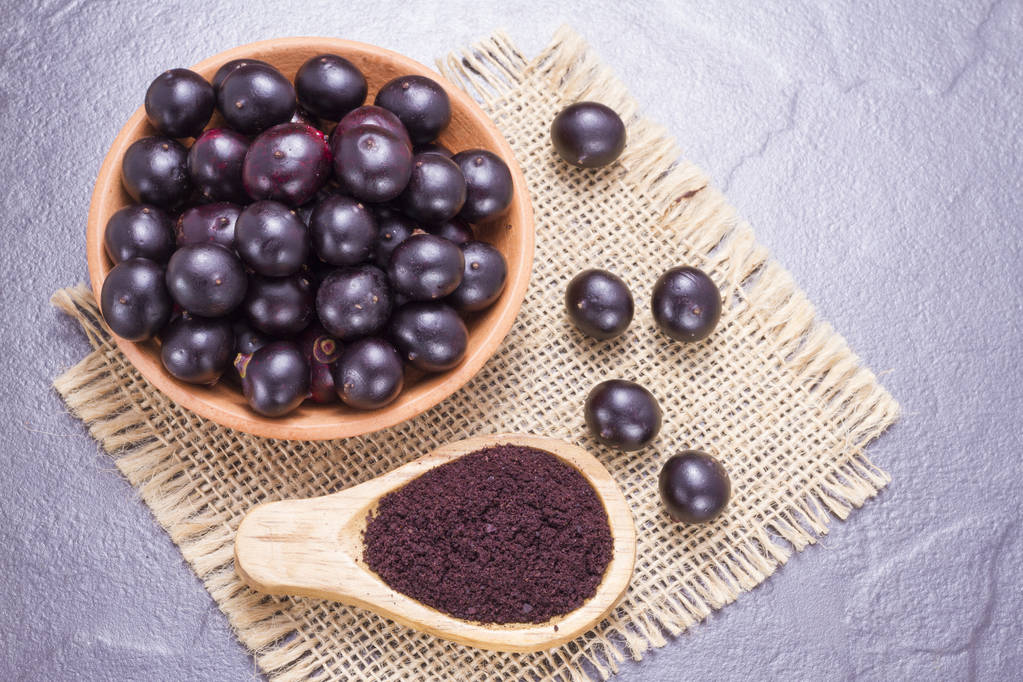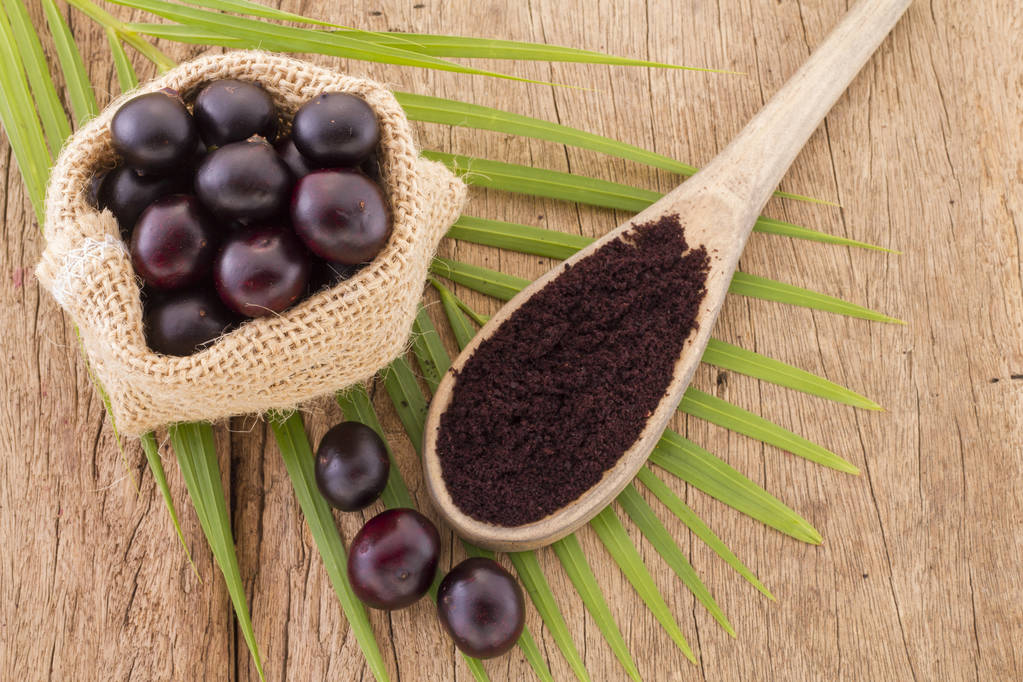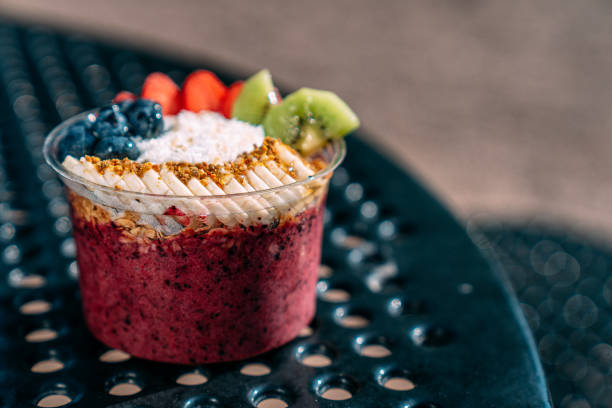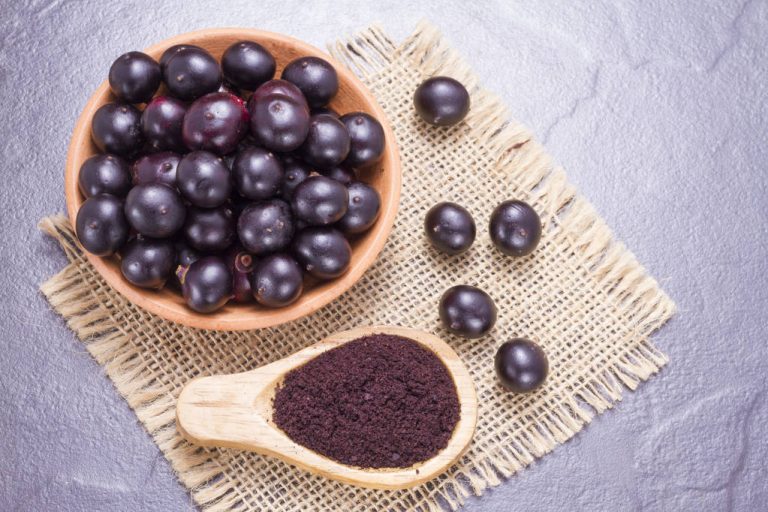Since the American talk show host Oprah Winfrey presented the small, dark blue acai berries in one of her shows, there has been a real hype in America. Hollywood stars rave about the miracle berries, which are said to make love handles disappear and erase wrinkles.
Acai Bowl (a mix of acai puree with bananas and other ingredients) is the new hot dish. One bowl a day and the ugly duckling turns into a slim supermodel swan. And while we’re at it, the berries are said to heal almost all diseases – cancer, AIDS, all age-related problems and metabolic problems included, of course. After all, the palm fruit comes from the Amazon region, where numerous previously unknown herbal remedies are suspected. All good reasons to suspect that the acai berry is a real superfood – which is also proclaimed the savior of the rainforest.
But is there really so much truth in these claims? Or is that just much ado about nothing after all?
Acai berry: what exactly is it?
Acai (correctly spelled Açaí, pronounced Assa-i) are the fruits of the South American Euterpe oleracea, the cabbage palm. An acai berry is therefore a drupe that has been used as a food in its natural range for centuries. The approximately one to two centimeter large, blue-black fruit grows in the up to 25 meter high crown of the cabbage palm.
The acai palm is native to the Amazon region. There it grows mainly in tidal brackish swamps and flood plains. The main agricultural deposits are in Brazil, in the Amapá and Pará regions. The palm formed several slender trunks with the typical “palm fronds” as a crown. About 90 percent of an acai berry consists of the core, and only the fleshy skin is processed and eaten. The taste isn’t for everyone either, with descriptions ranging from fruity-chocolaty to bitter-astringent.
Processing of the berry mostly as acai powder
In Germany, as in the rest of Europe, fresh Acai is not available, and frozen berries are very rare. Sometimes there is frozen fruit puree, but mostly the dark blue fruits are offered in powder form. Why actually? Well, the harvest is manual work and the fruits are very sensitive and cannot be stored very well. To pick the berries, plantation workers use foot slings to climb up the smooth trunks of the palm tree, as the acai grows at the very top. They are collected early in the morning in a basket that holds around 14 kilograms, and from midday the berries are sold on the market or processed into acai juice or puree in a factory. Anything that isn’t sold by evening has to be thrown away, otherwise the berries will go moldy or rot. The fruits would not survive a multi-day transport to Europe by ship.
Freezing them whole doesn’t make much sense either, as the main ingredient is the core. Therefore, the acai berries are washed, heated, cored and pureed. In South America, the juice is enjoyed fresh or frozen as a sorbet. For the European market, the puree is dried into powder (this reduces transport volume and weight and extends shelf life) or deep-frozen and preserved.
Hyped super breakfast: acai bowl or smoothie
Brazilian women are considered to be consistently beautiful women. Her secret recipe, it is said, is the Acai Bowl. In the original version, acai fruit puree is mixed with guarana and sliced bananas. The mix is designed to boost metabolism and prevent wrinkles. Stars and starlets swear by the Acai Bowl, and in this country too it is increasingly regarded as a super breakfast.
It’s also very easy to make: Take acai puree, one or two sliced and frozen bananas, add other berries or fruits to taste, coconut milk, milk or milk substitute, agave syrup or honey. Put all the ingredients in a blender and puree finely, pour the puree into a bowl and garnish, done.
Sounds like an acai smoothie? In principle, it is, just for spooning. Not-so-creative cooks can get inspiration from ideas and examples on the internet. Incidentally, it also works with acai powder, just not as well as with the frozen puree.
Healthy supermodels thanks to Acai Bowl?
Brazilians and Hollywood stars swear by it, and after all they are slim and beautiful. In addition, the manufacturers of tablets, capsules and other products with acai powder promise that they have studies that prove this effect. In fact, in a 2011 study, researchers were able to demonstrate positive effects of acai on blood pressure, cholesterol levels and blood sugar levels in overweight people.
So grab the Acai Bowl, get set, lose weight and reduce wrinkles and the risk of cancer at the same time? Unfortunately, no. A meta-analysis of acai studies shows that all of the supposed evidence (with the exception noted above) has not been researched in humans. Cell cultures in test tubes, mice and rats are simply not reliable proof of the effects of the fruit. That is why the judgment of the US health authority is rather negative.
Healthier than local soft fruit?
The berries have a lot of omega-3 fatty acids, many vitamins and minerals. The dark dyes also contain valuable antioxidants such as flavonoids. Dietary fibers in the edible peel ensure a higher feeling of satiety. In the regions of origin of the acai, even children get the fruit puree and are therefore more relaxed and healthier. At least that’s what the Brazilians say.
So yes, acai berries are healthy – just like any other dark colored soft fruit. By the way, local blackberries and especially blueberries contain about the same amount of vitamins and minerals, but also significantly more antioxidants.
The acai as (alleged) “savior of the rain forest”
The rainforest is definitely one of the areas most threatened by environmental degradation. Trees are felled by the hectare: for the extraction of tropical timber, as pasture for beef production, for the cultivation of (genetically modified) grain, for the exploitation of natural resources. For the acai harvest, on the other hand, no trees have to (and may not) be felled. The cabbage palm grows in swampy areas that would otherwise be difficult to cultivate. And the ever-increasing demand for the small, dark blue fruits ensures a secure income for the residents of the regions of origin.
The very dubious sustainability
Well, no trees have to be felled for the cultivation, which contributes to the preservation of the rainforest. Due to the geographically limited cultivation areas, the farmers benefit from the enormously increased demand. Monocultures and factory farming in Brazil can be pushed back somewhat. Compared to other superfoods such as goji berries or pineapple, this sounds almost heavenly and sustainable.
It’s just stupid that a few other facts about the ecological balance are swept under the table:
The long way of transportation. Acai come from South America and don’t grow anywhere else. That means they’ve traveled halfway around the world before they can be bought here. Not exactly environmentally friendly.
The processing. The harvested berries spoil quickly. This requires processing within 36 hours, and this requires a lot of energy because the fruit is washed, heated, cored and pureed by machine.
The cooling or drying. The processed berries don’t last long either. So that they can be sold in Europe at all, the puree must either be dried into a powder – or deep-frozen and transported with a cold chain. Both consume a lot of energy.





